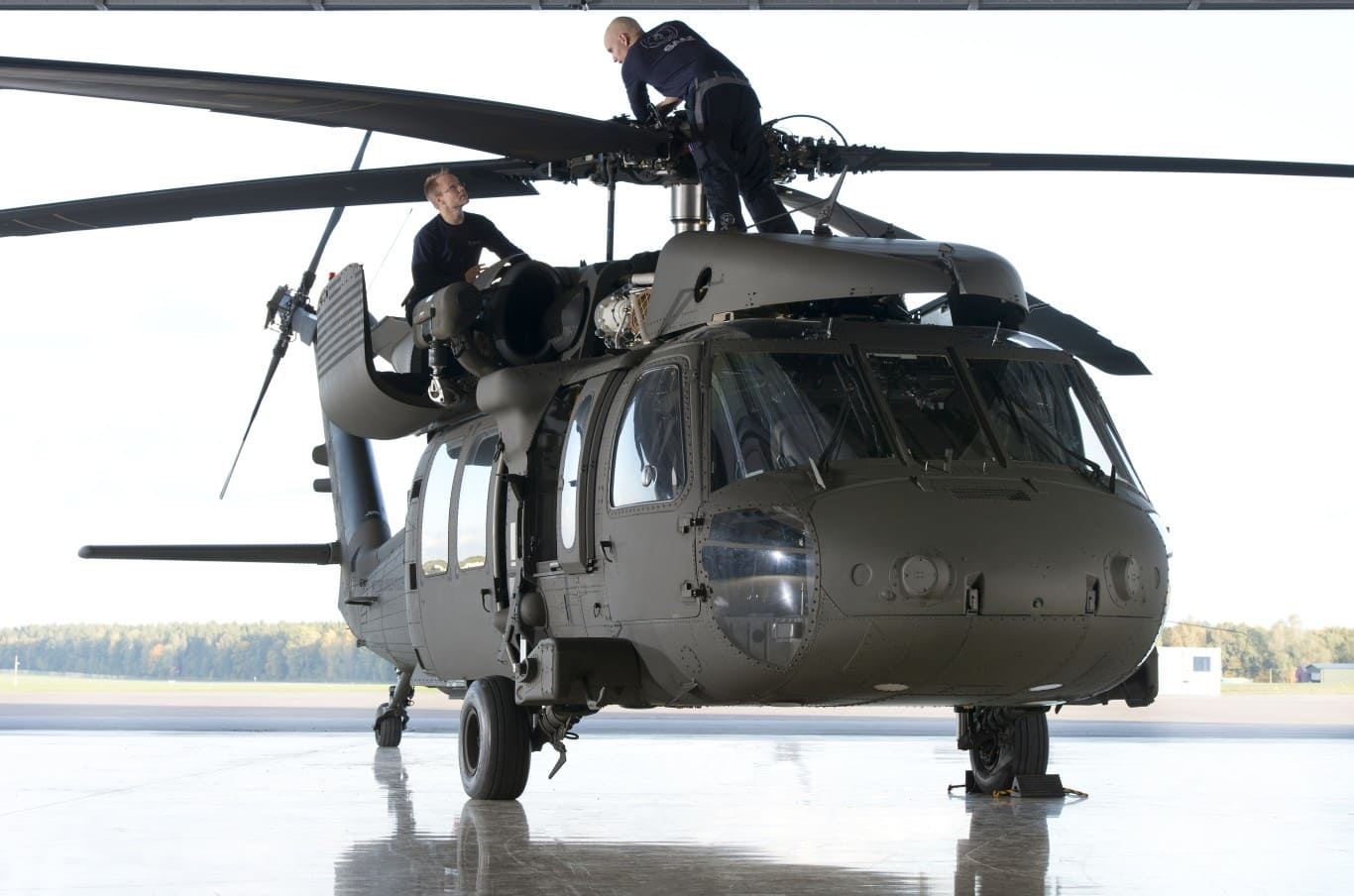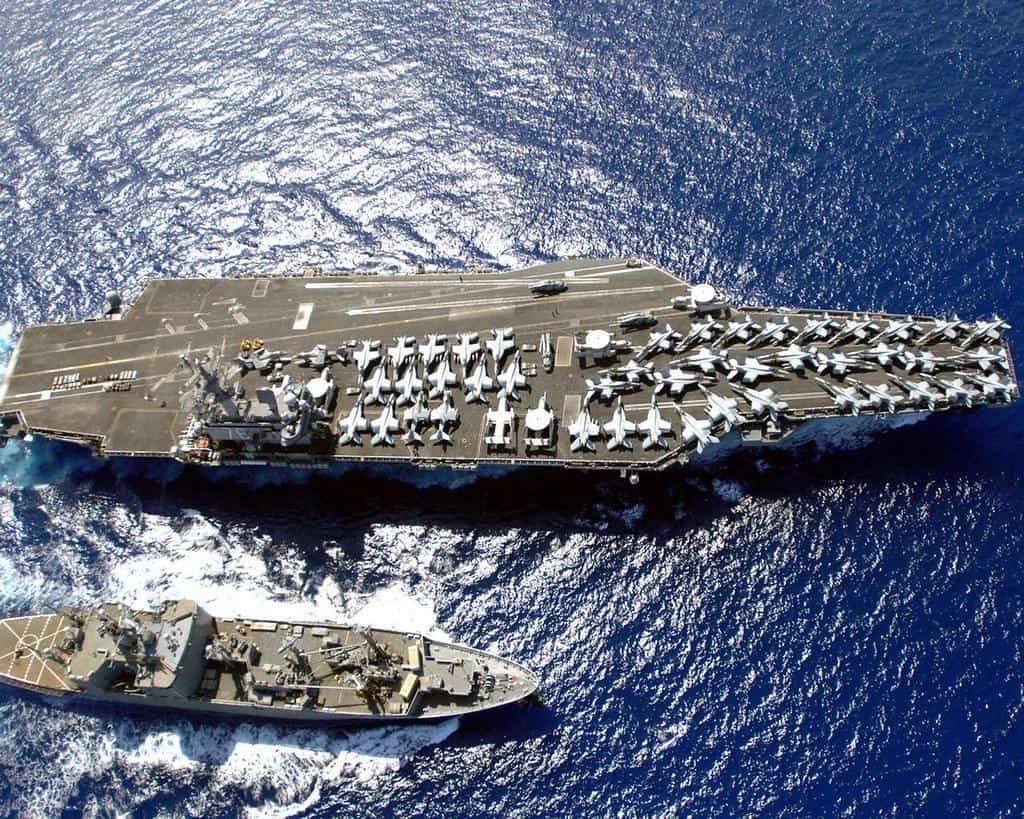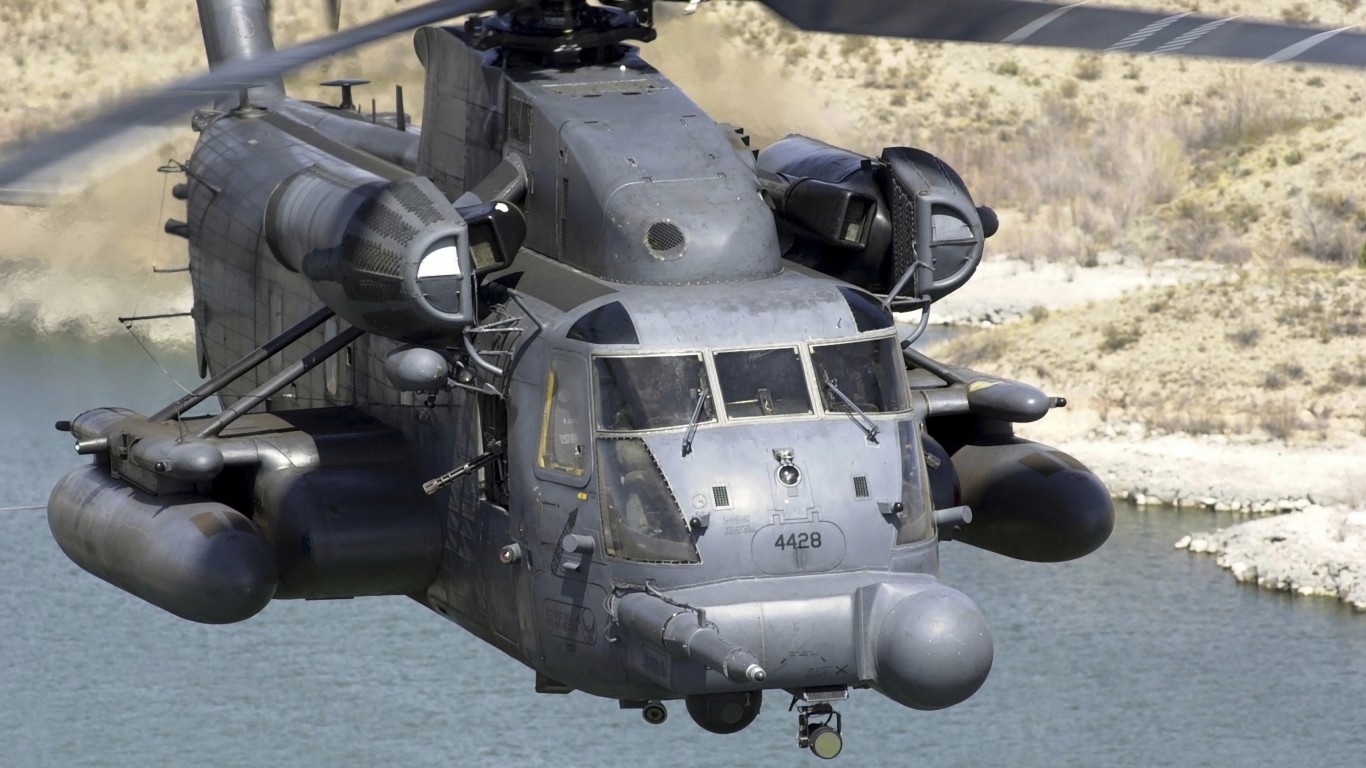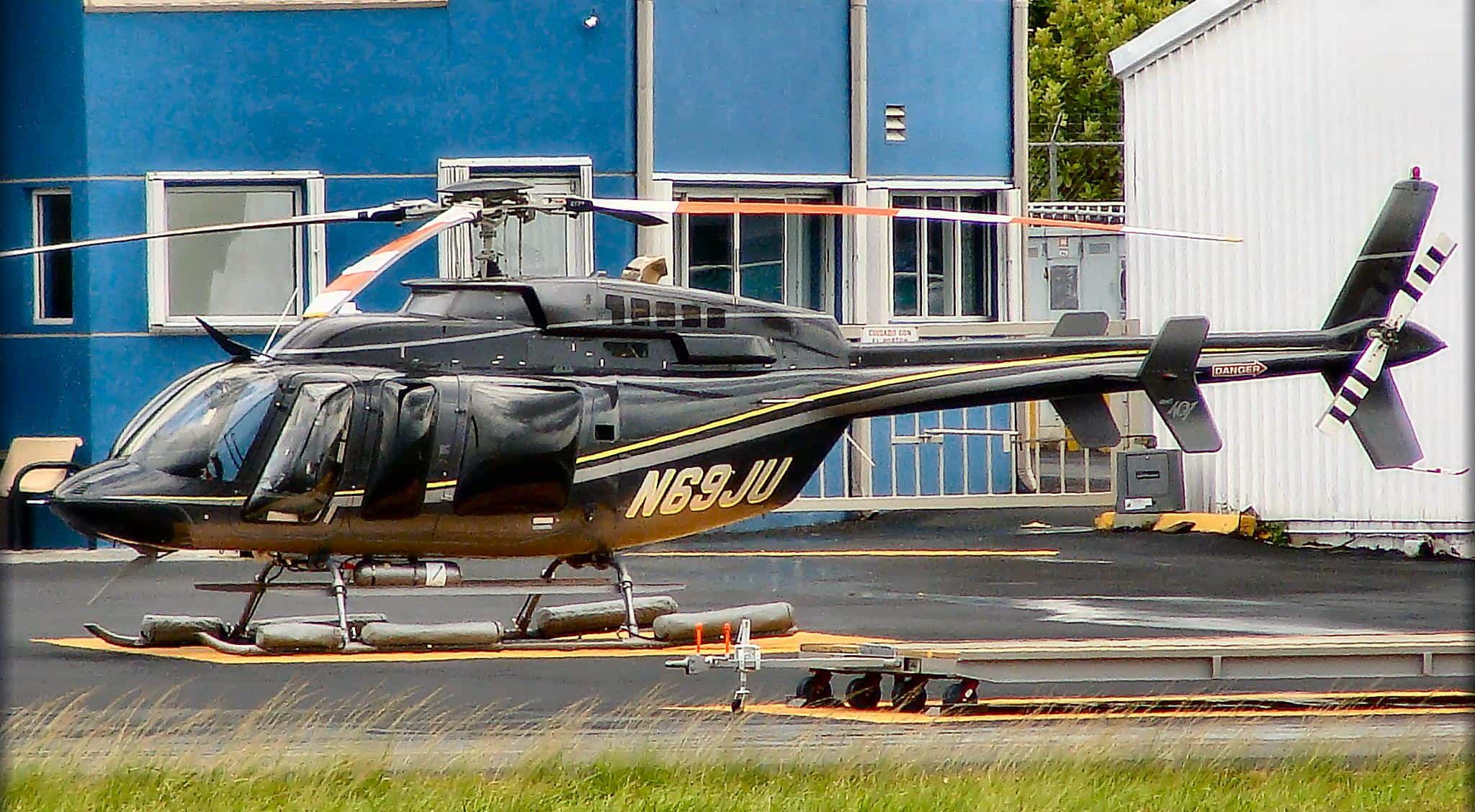
24/7 Wall St. Insights:
- The MH-60 Seahawk is one of the most widely used helicopters by the U.S. Navy
- The Seahawk has been deployed in various naval operations worldwide, including in Iraq and Afghanistan
- It is powered by two General Electric T700 engines, allowing it to reach speeds of over 180 mph
- Also: Discover the next Nvidia
The Black Hawk helicopter is the most widely used helicopter by the U.S. military and it comes in a number of variations. For use in the U.S. Navy, one of the main variants is the MH-60 Seahawk, which serves a number of roles ranging from search and rescue, transport or even to anti-surface warfare. All of this building on its land-based counterpart, the UH-60 Black Hawk, and under the S-70 Black Hawk designation. (This fighter jet makes up almost half of all Navy aircraft.)
Over the years, the Seahawk has been deployed in various naval operations worldwide, including in Iraq and Afghanistan, where it was repeatedly tested. Its ability to operate from aircraft carriers or other naval vessels gives the Navy a significant tactical and logistical advantage.
The Seahawk is powered by two General Electric T700 engines, allowing it to reach speeds of over 180 mph. It can carry a payload of up to 9,000 pounds, including advanced munitions like Hellfire missiles, torpedoes, and rocket pods. At the same time, it can carry up to 12 personnel, allowing it to support troop transport, medical evacuations, and other logistical operations, if need be.
All of this functionality makes for an ideal helicopter for the U.S. Navy. However, there are a few other helicopters the Navy employs for various other operations as well. (These are the most iconic combat aircraft built by Boeing.)
24/7 Wall St. is taking a closer look at the U.S. Navy’s helicopter fleet. To identify every helicopter flown by the U.S. Navy, 24/7 Wall St. reviewed data from the 2024 World Air Forces report from FlightGlobal, an aviation and aerospace industry website, and ranked the aircraft according to active units in service. Additionally, we’ve included supplemental information on the type of aircraft, how many are in active service, top speed and armament. We have excluded all trainer aircraft.
Here is a look at every helicopter in the U.S. Navy:
Why Are We Covering This?

24/7 would like our readers to understand where their tax dollars are being spent. The Navy received $202.6 billion in government funding in 2024, second only to the Air Force at $216.1. billion. In fiscal year 2025, the Navy has requested $16.6 billion of its funding to purchase 75 aircraft and helicopters, which is actually slightly less than in 2024.
4. Bell 407
- Type: Light utility helicopter
- Year introduced: 1996
- Active aircraft: 5
- Top speed: 162 mph
- Armament: N/A
3. MH-53E Pave Low

- Type: Multirole transport helicopter
- Year introduced: 1981
- Active aircraft: 26
- Top speed: 196 mph
- Armament: 7.62mm M134 miniguns, 12.7mm Browning M2 heavy machine guns
2. MV-22 Osprey
- Type: Tilt Rotor VTOL aircraft
- Year introduced: 2007
- Active aircraft: 27
- Top speed: 316 mph
- Armament: 7.62mm machine guns, 12.7mm machine guns
1. S-70 Black Hawk

- Type: Medium-lift multi-mission helicopter
- Year introduced: 1979
- Active aircraft: 454
- Top speed: 183 mph
- Armament: 7.62mm machine guns, Hellfire missiles, 12.7mm gatling guns, M134 gatling guns, rocket pods, 30mm chain gun
Take Charge of Your Retirement In Just A Few Minutes (Sponsor)
Retirement planning doesn’t have to feel overwhelming. The key is finding expert guidance—and SmartAsset’s simple quiz makes it easier than ever for you to connect with a vetted financial advisor.
Here’s how it works:
- Answer a Few Simple Questions. Tell us a bit about your goals and preferences—it only takes a few minutes!
- Get Matched with Vetted Advisors Our smart tool matches you with up to three pre-screened, vetted advisors who serve your area and are held to a fiduciary standard to act in your best interests. Click here to begin
- Choose Your Fit Review their profiles, schedule an introductory call (or meet in person), and select the advisor who feel is right for you.
Why wait? Start building the retirement you’ve always dreamed of. Click here to get started today!
Thank you for reading! Have some feedback for us?
Contact the 24/7 Wall St. editorial team.






